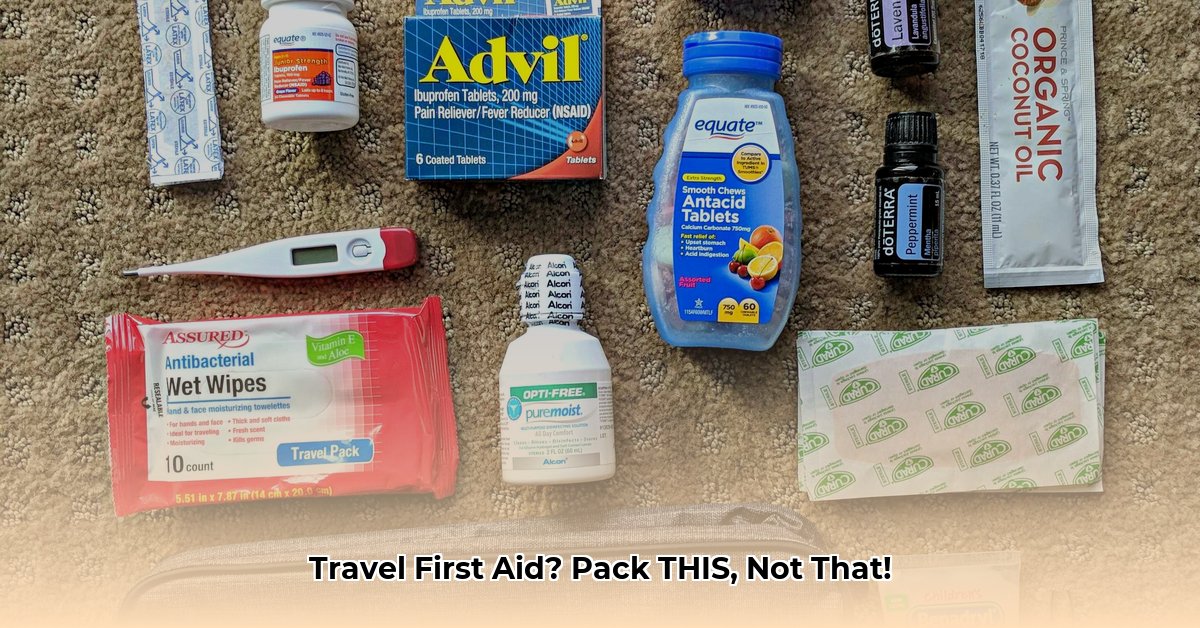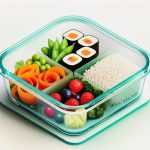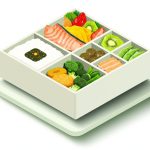Imagine this: you’re exploring a bustling market in Marrakech, the aroma of spices filling the air, when suddenly, a rogue scooter clips your ankle. A minor scrape, but enough to put a damper on your souk stroll. Or perhaps you’re trekking through the lush rainforests of Costa Rica when a persistent mosquito delivers an unwelcome itchy souvenir. These minor mishaps can quickly escalate and derail your travel plans if you’re not prepared. That’s where a well-equipped travel first aid kit comes in—your pocket-sized health companion, ready to tackle common travel ailments and keep your adventures on track. This comprehensive guide will walk you through building your perfect kit, navigating airline regulations, and mastering essential first aid techniques, ensuring you’re prepared for whatever your journey throws your way.
Building Your Essential Travel First Aid Kit
A personalized first aid kit is your travel health insurance policy. While pre-made kits offer convenience, customizing your own allows you to address your specific needs and anticipated health concerns.
Essential Supplies: Your Personalized Health Squad
Think of these items as the core members of your travel health team.
Wound Care: Your First Line of Defense
- Band-aids (assorted sizes): From minor paper cuts to larger scrapes, a variety of sizes ensures you’re prepared for any boo-boo.
- Butterfly closures: These are excellent for closing gaping wounds that regular bandages might not handle effectively.
- Sterile gauze pads: Ideal for cleaning and covering larger wounds or burns.
- Antiseptic wipes/Hand sanitizer (at least 60% alcohol): Crucial for disinfecting wounds and preventing infection.
- Antibiotic ointment: Further protects against infection by creating a barrier against bacteria.
- Medical tape: Secure bandages and dressings in place.
- Blister plasters/Moleskin: Hiker’s best friend! Prevents and treats blisters, keeping you comfortable on the trail.
- Tweezers: Essential for removing splinters and ticks.
- Small scissors: Handy for cutting bandages and tape (pack in checked baggage).
Pain & Fever Management: Taming Discomfort
- Pain relievers (acetaminophen/ibuprofen): Over-the-counter pain relievers can manage headaches, muscle aches, and fever. Consider child-friendly formulas if traveling with children.
- Antihistamines (oral and topical): Alleviate allergy symptoms and soothe itchy insect bites. Be mindful of potential drowsiness with some antihistamines.
Medications: Your Pocket Pharmacy
- Personal prescription medications: Pack enough for your trip plus a few extra days in clearly labeled containers. A copy of your prescription, especially for controlled substances, might be beneficial.
- Motion sickness medication: If you’re prone to motion sickness, these can be a lifesaver on long journeys.
- Anti-diarrheal medication: Digestive issues can occur when trying new foods or encountering different water sources.
- Antacids: Soothe heartburn and indigestion.
- Cough and cold medicine: Address common cold symptoms if they arise during your travels.
- Laxative/stool softener: Relieve occasional constipation (use with caution and follow directions).
Tools & Other Essentials: The Supporting Cast
- Thermometer: Monitor fever and assess your overall health.
- Safety pins: Surprisingly versatile for various first aid needs.
- CPR face shield: Provides a barrier during CPR, although CPR training is highly recommended.
- First aid manual: A quick reference guide for common first aid procedures.
- Insect repellent: Protect yourself from mosquito bites and other insect-borne illnesses. Consider DEET percentage based on your destination.
- Sunscreen: Essential for protecting your skin from harmful UV rays, especially in sunny or high-altitude destinations.
- Aloe vera gel: Soothe sunburned skin and promote healing.
Choosing a Pre-made Kit: A Convenient Foundation
Pre-made kits offer a quick and easy way to get started. However, they often require personalization to fully address your individual needs.
Pre-Made First Aid Kit Comparison Chart
| Kit Type | Ideal For | Size/Weight | Probable Price Range | Potential Advantages | Potential Disadvantages |
|---|---|---|---|---|---|
| Basic First Aid Kit | Everyday use, minor injuries | Small/Light | $ | Affordable, readily available | Limited supplies for serious scenarios |
| Travel First Aid Kit | General travel, common travel ailments | Small/Light | $$ | Portable, covers common travel needs | May lack specialized items |
| Backpacking First Aid Kit | Hiking, backpacking, multi-day trips | Compact/Light | $$-$$$ | Tailored for wilderness injuries | Can be more expensive |
| Wilderness First Aid Kit | Remote expeditions, extended wilderness trips | Moderate/Moderate | $$$-$$$$ | Comprehensive supplies for serious situations | Bulky, requires training |
| Family First Aid Kit | Family trips, common childhood injuries | Moderate/Moderate | $$ | Kid-friendly, addresses various age groups | May not be suitable for solo travelers |
| Specialized First Aid Kits (e.g., Boating, Sports) | Specific activities, targeted injuries | Varies | Varies | Addresses specific risks associated with the activity | May not cover general first aid needs |
Mastering Essential First Aid Techniques
Having a well-stocked kit is only part of the equation. Knowing how to use it effectively is crucial. Consider taking a basic first aid and CPR course before your trip.
Common Travel Ailments & Treatments
-
Cuts & Scrapes:
- Wash hands thoroughly or use hand sanitizer.
- Clean the wound with antiseptic wipes or clean water.
- Apply antibiotic ointment (optional).
- Cover with a clean bandage.
-
Blisters:
- Do not pop the blister unless it’s large and painful.
- Cover with a blister plaster or moleskin to reduce friction.
- If the blister breaks, clean it and cover with a bandage.
-
Insect Bites & Stings:
- Remove any stingers (if applicable).
- Wash the area with soap and water.
- Apply a cold compress to reduce swelling.
- Apply hydrocortisone cream or calamine lotion to relieve itching.
- Take an oral antihistamine if needed.
-
Sunburn:
- Cool the skin with cool compresses or a cool shower.
- Apply aloe vera gel or a moisturizing lotion.
- Drink plenty of fluids to stay hydrated.
- Avoid further sun exposure.
-
Upset Stomach/Diarrhea:
- Drink clear fluids to stay hydrated.
- Avoid fatty or greasy foods.
- Consider taking an anti-diarrheal medication.
- If symptoms persist, seek medical attention.
Navigating Airline Regulations
Understanding Transportation Security Administration (TSA) guidelines will prevent headaches at the airport.
- Liquids, Gels, and Aerosols: Follow the 3-1-1 rule: containers must be 3.4 ounces (100 milliliters) or less and placed in a single, quart-sized, clear, plastic, zip-top bag.
- Medications: Medications are generally exempt from the 3-1-1 rule but should be kept in their original containers with labels. Carrying a copy of your prescription, especially for controlled substances, is a good practice.
- Sharp Objects: Pack sharp objects like scissors and tweezers in your checked baggage.
Destination-Specific Considerations
Research your destination’s specific health risks and recommended vaccinations. Consult your doctor or a travel clinic for personalized advice. Carry a card with emergency contact information and important medical details, including allergies and current medications.
Conclusion
A well-planned travel first aid kit empowers you to address minor medical issues and enjoy your travels with confidence. This comprehensive guide has provided the tools and knowledge to equip yourself for whatever your adventures may bring. Remember, staying informed and prepared is the best way to safeguard your health and ensure a memorable trip. Safe travels!
- How Glass Bento Box Containers Make Meal Prep Easier - December 18, 2025
- Why Glass Boxes for Lunch Are Trending for Meal Prep - December 17, 2025
- Bento Box Glass Offers Practical, Eco-Friendly Meal Storage - December 16, 2025










